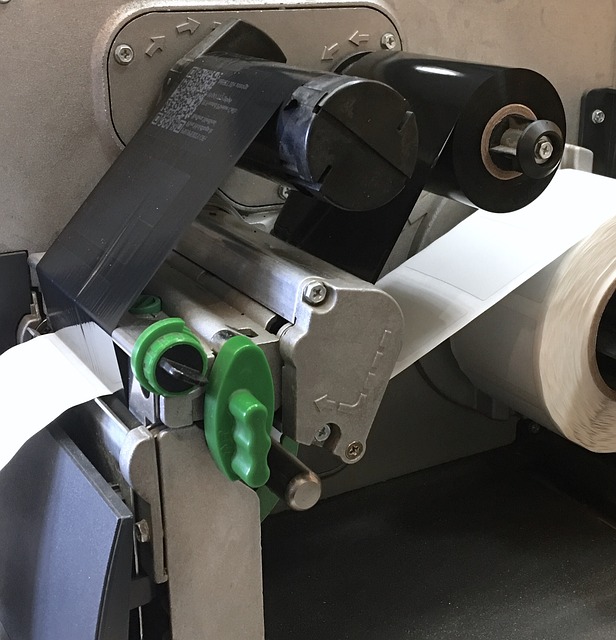When transitioning vehicle ownership, understanding and accurately completing the DMV title transfer form is paramount for a smooth process. This article demystifies the DMV title transfer form’s role and provides a comprehensive guide on its correct utilization. Whether you’re a buyer or seller, familiarize yourself with the car title application intricacies to ensure a seamless vehicle title transfer. We’ll navigate the DMV title transfer process, including title transfer fees and registration transfer procedures, to empower you with the knowledge needed to complete this critical transaction without delay or complications.
- Understanding the DMV Title Transfer Form and Its Role in Vehicle Ownership Transition
- Step-by-Step Guide to Filling Out the Car Title Application for a Seamless Transfer
- Key Information Required on the DMV Title Transfer Form: Vehicle, Seller, and Buyer Details
- Navigating Title Transfer Fees and Completing the Registration Transfer at the DMV
Understanding the DMV Title Transfer Form and Its Role in Vehicle Ownership Transition

When transitioning vehicle ownership, completing a DMV title transfer form is an indispensable step in the process. This critical document serves as the car title application that legally transfers the title from the seller to the buyer. It is a comprehensive record that captures essential details pertaining to the vehicle, including its make, model, and identification number, alongside the personal information of both the seller and the buyer. The form’s accuracy is paramount; errors can lead to holdups in the DMV title transfer process, potentially causing delays and complications that could have legal ramifications.
The DMV title transfer form is meticulously designed to streamline the transition of vehicle registration transfer as well. It requires the buyer to provide their information, such as name, address, and contact details, ensuring that the registered owner’s records are up-to-date with the state’s Department of Motor Vehicles (DMV). Additionally, the seller must relinquish their rights to the vehicle by signing over their ownership. Title transfer fees are also outlined within the form or associated documentation, which must be settled as per state regulations. Understanding and properly filling out this form is a prerequisite for a smooth transition of car title ownership and is integral to maintaining legal compliance with state vehicular registration laws.
Step-by-Step Guide to Filling Out the Car Title Application for a Seamless Transfer

To ensure a smooth vehicle title transfer, it is imperative to carefully complete the DMV title transfer form, also known as the car title application. Begin by accessing the official form provided by your state’s Department of Motor Vehicles (DMV). This form is essential for legally transferring the ownership of a vehicle from one party to another. Firstly, fill in the make and model of the car, along with its current title number, which can be found on the existing title document. Next, provide accurate information about the seller, including their full name, address, and signature. This section confirms the current owner’s consent to transfer the title.
Moving forward, the buyer must supply their personal details, such as their full legal name, driver’s license number, address, and contact information. Ensure that all details are complete and correct to avoid any processing delays or potential legal complications. Additionally, be prepared to pay the required title transfer fees, which vary by state. These fees facilitate the update of vehicle registration and official records at the DMV. Once the form is filled out, double-check all entries for accuracy. Submit the completed car title application along with any necessary documentation and fees to your local DMV office or via their online portal if available. Completing these steps meticulously will facilitate a swift and efficient vehicle registration transfer process.
Key Information Required on the DMV Title Transfer Form: Vehicle, Seller, and Buyer Details

Navigating the DMV title transfer process involves completing the car title application accurately to facilitate a seamless transfer of vehicle ownership. The DMV title transfer form requires comprehensive details about the vehicle, including its make, model, VIN number, and current title status. This information ensures that the vehicle’s history and legal standing are correctly updated with the state’s department of motor vehicles. Additionally, the seller’s information must be precise, including their full name, address, signature, and current odometer reading, as it confirms the previous ownership status. The buyer, too, must provide their personal details such as full name, address, signature, and driver’s license number. This due diligence is critical for the title transfer fees to be processed correctly and for the vehicle registration transfer to be reflected in the state’s records without delay. Incorrect information can lead to complications and setbacks, emphasizing the importance of attention to detail when filling out the DMV title transfer form. It is advisable to review all sections of the form thoroughly before submission to ensure that every field is accurate and complete, adhering to the requirements set forth in the DMV title transfer process guidelines.
Navigating Title Transfer Fees and Completing the Registration Transfer at the DMV

Navigating the vehicle title transfer process at the Department of Motor Vehicles (DMV) involves several steps, with a key element being the completion of the DMV title transfer form, also known as the car title application. This document serves as an official record that the ownership of the vehicle has been lawfully transferred from the seller to the buyer. To initiate the transfer, one must fill out this form with precise information regarding the vehicle’s details, the seller’s data, and the buyer’s particulars. This ensures that the vehicle registration is accurately updated and reflects the new ownership. It is imperative to double-check all entries for accuracy to prevent any setbacks in the process.
Once the form is correctly filled out, the next step is understanding and paying the appropriate title transfer fees. These fees vary by state and may include charges for transfer taxes, processing fees, and additional costs based on the vehicle’s category or value. It is advisable to familiarize oneself with these fees in advance to prepare for the transaction at the DMV. After submitting the completed form and the necessary fee payment, the DMV will process the title transfer request. The registration transfer follows a similar procedure, where the new owner’s license plates must be transferred or renewed to complete the process. Ensuring all documentation is in order before visiting the DMV can expedite this process and avoid any complications that might arise from incomplete or incorrect paperwork.
Navigating the DMV title transfer process can be a straightforward task when armed with the right information and guided by the appropriate procedures. This article has outlined the critical aspects of the vehicle title transfer, emphasizing the significance of accurately completing the DMV title transfer form as the first step in this transition. By following the detailed steps provided for filling out the car title application, individuals can ensure a smooth and efficient transfer of car ownership. Understanding the key details required on the form, such as vehicle specifics, seller information, and buyer particulars, is essential for updating vehicle registration without unnecessary delays or complications. Additionally, being aware of title transfer fees is crucial for planning and completing the process at the DMV. In conclusion, whether you are a buyer or a seller, thoroughly grasping these elements will facilitate a seamless transition and help you comply with legal requirements, ensuring your car’s title is transferred promptly and correctly.



